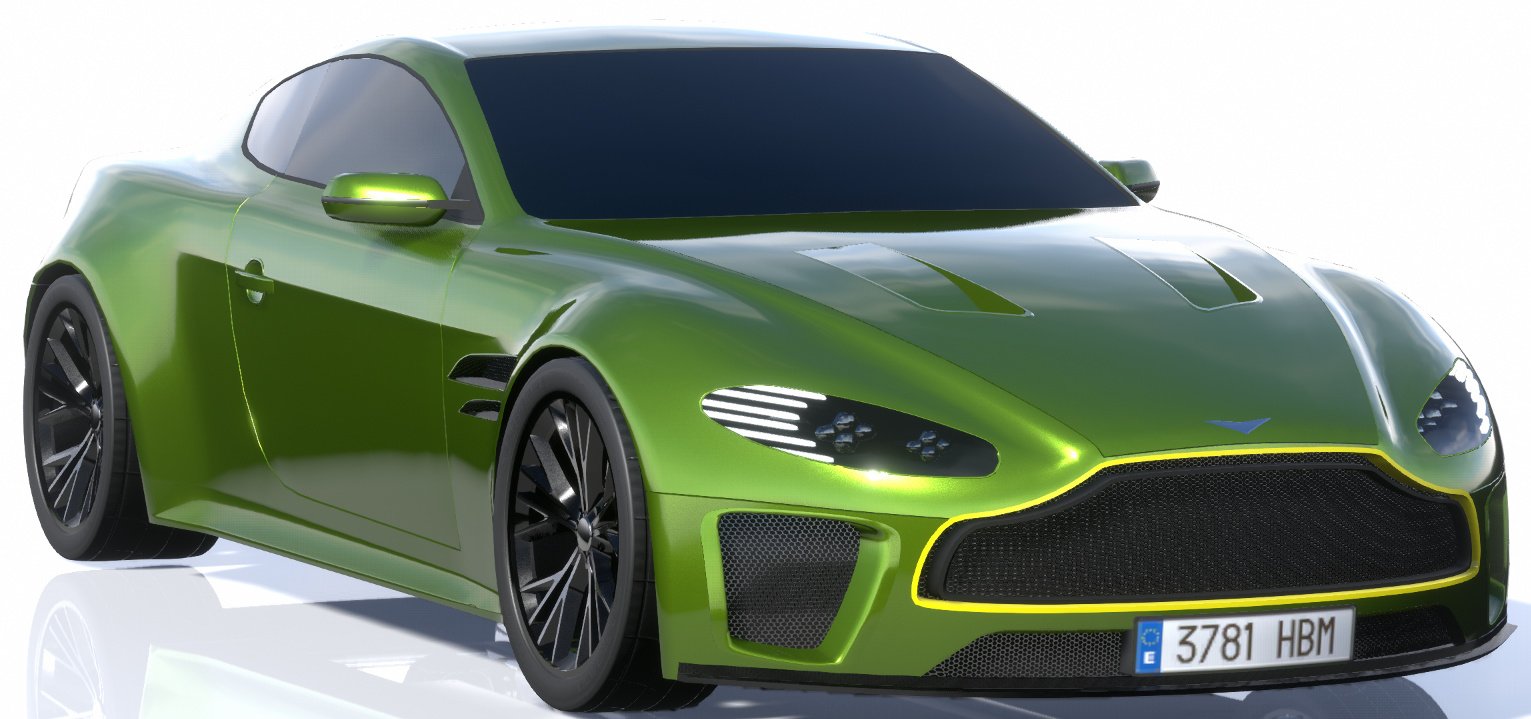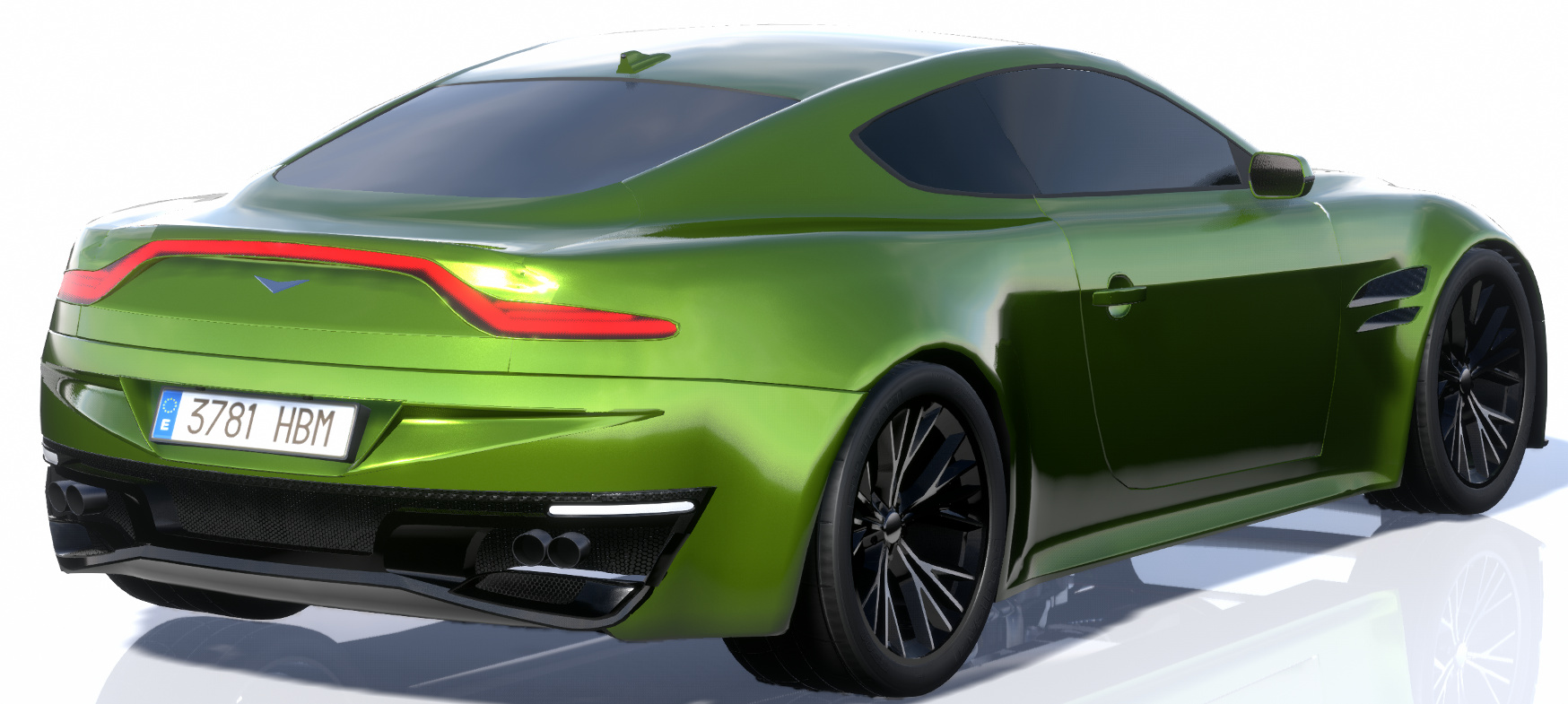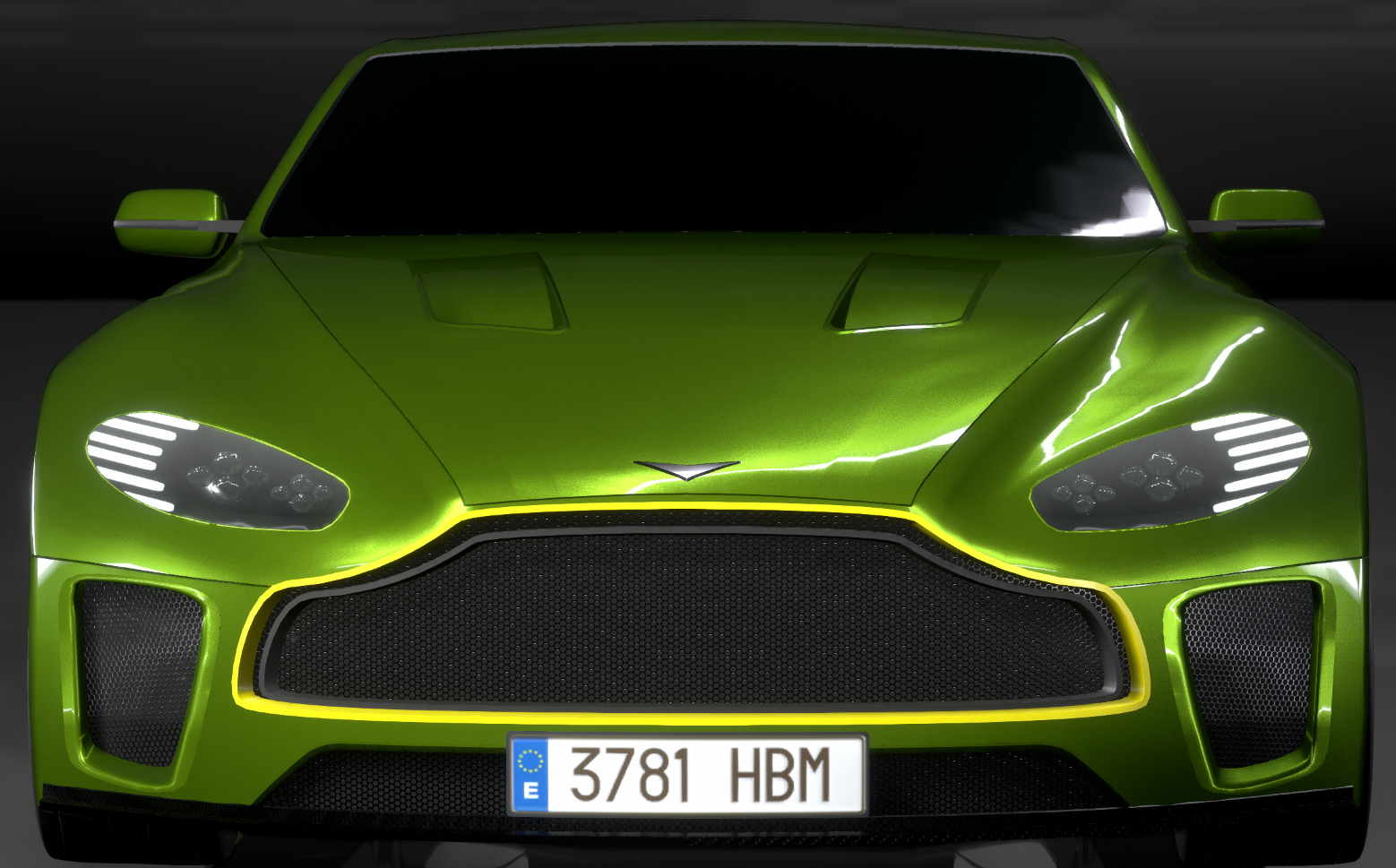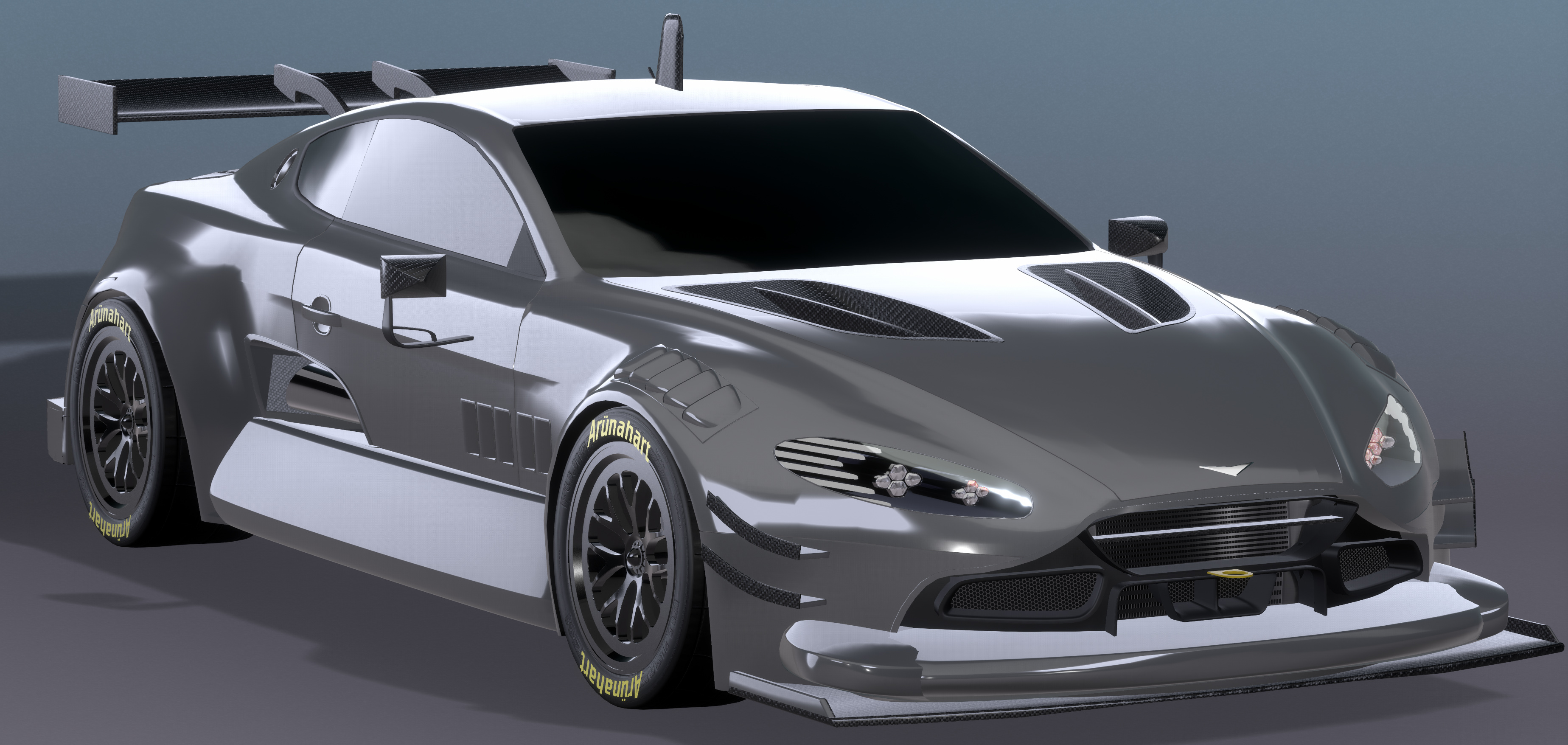Little disclaimer: English is not my first language, so be sure to tell me if you notice any mistakes!

(Our latest model, the 2021 Crest Tuono III).


(The Tuono’s Engine Bay)
1934
Herefordshire, England.
Herbert H. Attics, a rich heir, is seeking the help of someone more knowledgeable than him in mechanics to build a race car, to compete with Bugatti’s cars.
The tale tells that the rivalry began at a party, where both Attics and Bugatti were invited, and they had a dispute about english food, or so they say.
He found the helping hand he was looking for in the person of Georges Puy, a French emigrant. He had graduated from the ESME School of automobile engineering in Lyon, four years prior. He had settled in England and had found a job as a low grade mechanic at a local garage.
Attics, who drove a 1933 Duesenberg J, only trusted this tiny garage to do his repairs, tire changes…
After bringing in his car for the usual maintenance, Attics and Puy had the occasion to discuss the project…
1935
This picture was found, where you can barely see the car they had created: the 1935 Crest Model V (for vitesse).

After a handful of races, unfortunately, Attics was found dead in his home, of an unknown disease. Puy, who was still a mechanic, did not have a single percent of the money needed to keep the company afloat.
The company was then bought for a crumb of bread by Clint Brabham, but as the geopolitical tensions rose, this was not a time for a fragile company to risk losing more money.
1959
Clint Brabham, who already owned a factory, decided it was time to launch a new model, under the Crest-Brabham name.
1959-1962 Crest Espada I
Brabham knew he had to mark the renew of the brand with a tour de force.
The mk1 Espada, more than the looks, had the power: the only engine choice for the years it was sold was a 3L SOHC inline 6 equipped with 2 barrel twin carburetors, with a 181hp/258Nm output.
The car wasn’t considered fast for its time, with a 0-100 in about 11s, but its top speed of 235km/h made up for the lack in acceleration.
Aluminum panels sitting atop of a galvanized steel chassis made the car light (1061kg), and the double wishbone suspension (F/R) made it nimble and agile.
Sold for 3,450$, or 31000$ in today’s money, the car was perfectly positioned as a mid-range GT, and over it’s 3 year life span, 532 coupés were sold.
Pictures



As you can notice, the first gen Espada was the car that first beared the signature Crest grille.
At the time, the critics were surprised that the Crest brand would ever launch a car again, but were overall very pleased with the car’s handling and speed.
Now that Brabham had tested the markets, he was convinced that the return of the Crest brand would be a success.
1962
The Crest-Brabham design team did not want to disapoint the potential buyers, so they kept the same body lines for the 62-66 Crest Espada II, but enhanced the design “quite tastefully”, as owners would describe it.
1962-1967 Crest Espada II “atlantic”
The mkII Espada kept the same chassis as the mkI, but tuned the suspension to be more comfortable yet still as springy.
The engine choice was also very limited, since the only option was the 3L SOHC inline 6, but this time, the carburetor system was swapped for a 4 Barrel Twin Carb.
In addition to a change in fuel system, the conrods, pistons and crank were now forged, allowing the engine to rev up to 6000rpm (800rpm more than gen1).
The engine now produced 212bhp/270Nm, a noticeable bump in performance.
Mated to a 4 speed manual, the Espada II had a top speed of 258km/h, and a 0-100 of 9.78s.
Pictures




(Espada with the Lux package shown (wire wheels and chromed side air intake))
(You can see why it was nicknamed “Atlantic”, the chrome line that cuts the car in the middle is an element taken from the Bugatti Type 57 Atlantic).
The base price of the Espada II was 3,800$, or 30,500$ in todays money.
The mkII Espada sold fairly well, with over 800 cars sold over it’s 5 year life.
1966 pt.2
The year 1966 announces a radical change in terms of design for the Crest-Brabham company.
Inspired by the pony car movement that had launched a few years prior, Crest’s chief designer began sketching up something that was less rounded than the previous designs, something more agressive, to mimic the USA’s growing pony car craze.
Crest believed that an inline engine wouldn’t suit the muscle car vibe. They did believe however that the engine that would power the mkIII Espada should be made in house.
Thus, the development of two NAV8 began.
1967
The launch of the 3rd generation Espada.
1967-1978 Crest Espada III
With its muscular looks, the car appealed to the consumers because they brought that “American Lifestyle” through its design.
Equipped with either a 4.2L V8 (260bhp/334Nm) in the standard edition, or a 5.6L V8 (357bhp/446Nm) in the GT trim (which came with exclusive exterior fixtures…), the third gen Espada had nothing to envy to the recently launched Ford Mustang, whose biggest engine (the 4.7L Windsor HiPo) had an output of 270bhp.
Both trims are equipped with front and rear disc brakes, although the GT’s are bigger.
The body and chassis technology was almost untouched, keeping an all aluminum body sitting on a galvanized steel monocoque chassis.
The size of the car was on par with its american cousins, 4072cm long and 1930cm wide (you could find ferries smaller than that…), and had a curb weight of 1216kg.
Pictures

(notice the evolution of the signature grille, made of aluminum)




1967-1974 Crest Espada III GT
Pictures



Equipped with a 5.6L NAV8 SOHC (Quad Barrel Twin Carb), and a 5 speed manual gearbox (Auto Locking), the GT was definitely worth the price if you were looking for something more agressive.
Let’s compare stats a bit:
- 0-100 (GT) > 6,3s
- 0-100 (Standard) > 6,91s
- Top Speed (GT) > 274km/h
- Top Speed (Standard) > 251km/h
Price wise, the standard Espada III was sold for 5,450$, while the GT was sold for 6,000$.
The price increase did leave some customers unhappy, but the car sold relatively well, selling over 8700 units.
1978
1978-1987 Crest Espada IIII
The 4th generation Espada keeps most of the design language of the 3rd gen. Fastback, headlights integrated to the grille, sloped back, chrome trims… And at the same time, the body design, more square, marks the entry into the 80s.
The mkIIII Espada differs from its older sister in the fact that different engines didn’t mean different trim levels.
It was available with either a 4.5L SOHC NAV8 (270bhp/322Nm 6200rpm), or a 5.6L SOHC NAV8 (344bhp/420Nm 6000rpm), both with MFI, and both engines were mated to a 5-speed manual.
Same as the mkIII, the mkIIII was equipped with F/R disc brakes, but this time with a two-piston system on the front brakes.
And, as all its predecessors, it was made from an aluminum body on a galvanized steel chassis, with F/R double wishbone suspensions (only this time, equipped with Progressive Gas-Tubes).
Pictures





EN: This car makes me want to listen to Earth, Wind and Fire for some reason)
Two trims were available regardless of engine choice:
- the S: Leather interior, premium radio system.
- the Exclusive: Suede/Leather interior, 8 track Cassette player, hydropneumatic Twin-Tube suspension.
Prices varied from 11,000$ to 13,500$ (with the Exclusive package and 5.6L V8).
Performance wise:
- 4.5L: 0-100 7.3s, top speed 270km/h
- 5.6L; 0-100 6.3s, top speed 275km/h
Fun fact: Eldorado Orange was a color option only available with the Exclusive pack:
Pictures

Three years after the lauch of the car, Crest-Brabham’s new CEO, Phillip Ross, decided to export to the US and Asia.
The Espada IIII sold relatively well, around 5300 units, but the public were not as ecstatic about the 4th gen, maybe because of the more toned down look of the car.
1987
1987-1999 Crest Espada V
The fifth gen brings the Espada into the 90s with a statement. More power, more speed, more comfort than ever.
A new platform: the aluminum body was now coupled to a treated steel monocoque.
Two engine choices: a 4.0L TTV8 MP-EFI (363bhp/468Nm at 6000rpm) or a 4.5L TTV8 MP-EFI (430bhp/510Nm at 6500rpm).
Two gearbox choices: a 5 speed manual (Geared LSD) or a 4 speed automatic.
The Espada V S (4.5L V8) had a 0-100 time of 5.3s and a 298km/h top speed, while the standard Espada had a 0-100 time of 6s and a 280km/h top speed.
Pictures



The fourth generation drops the fastback body, to adopt a more standard coupe look. This aesthetic change can be explained by the fact that potential buyers wanted more cargo space, because many did buy a Crest Espada as a daily driver.
Spec wise, ventilated disc brakes front and rear, a needed upgrade to stop the now more powerful than ever Espada.
Price ranged from 24,800$ to 27,000$.
1992
Phillip Ross, still CEO of the Crest-Brabham company, found that there was still a market for a fastback-type coupe, and so decided to put his teams of designers and engineers to work.
1992-1998 Crest Audace I
The Audace was Crest’s answer to the growing supercar market. It was also kind of a publicity stunt, to showcase what the brand was capable of (and attract less fortunate buyers to the Espada).
Available only with a 6.7L TTV8 (505bhp/680Nm at 6000rpm). With a curb weight of 1600kg, the car had a 0-100 time of 4.7s and a theoric top speed of 328km/h, making it one of the fastest cars of the production.
The interior was as comfortable as the Espada, and critics were pleased with the fact that the Audace combined power and comfort in such a way.
Pictures





1999
1999-2008 Crest Audace II
The introduction of the second gen Audace signs the debut of a new design. No more square angles, the Audace II comes with the “biodesign” of the 2000’s.
Available only with a 5.8L TTV10 (630bhp/720Nm at 6200rpm). The car had a 0-100 of 4.9s and a potential top speed of 350km/h.
Pictures




The beginning of the 21st century marks a change in direction for the brand. New CEO, new strategies.
The Crest-Brabham brand was bought in 2001 by Arthur Moreau, a french investor. Under his lead, the brand ceased the launch of the Espada for a few years, to allow the brand to test the markets.
2003
2003-2007 Crest Tuono I
The Crest Tuono was a radical change in the lineup of the brand. It wasn’t a RWD GT, it was a big and luxurious AWD coupe, able to take the whole family up to a trip in Aspen (or whatever).
Powered by a 6.0L TTV12 (612bhp/790Nm at 6500rpm). The Tuono had a 0-100 time of 3.6s and a 345km/h top speed.
Thanks to its AWD system (70R/30F), it was the fastest car the brand ever made, even though the idea behind this model wasn’t to create a race car.
As for the construction, the all aluminum body was paired with a welded-aluminum monocoque chassis.
For the luxury part, it was equipped with either leather/nappa interor with a wood trim, a stack-CD Player, and air springs with adaptive dampers.
Pictures





(rear diffuser should be color-matched, weird bug / quality of renders isn’t on point, my pc doesn’t want to take high-res pics for some reason).
The car originally sold for 95,000$ dollars until 2005, then for 105,000$.
Despite its high price point, the car sold relatively well, enough for the new CEO to believe in this new design and in this market.
2005
2005-2012 Crest Espada VI
Following the success of the Tuono, the Crest-Brabham design team began to work on the sucessor of the popular Espada model.
Equipped with a 6.0L DOHC TTV12 (565bhp/722Nm at 7000rpm), the car had a 0-100 time of 4.8s, and a 360km/h top speed.
Double wishbones F/R coupled to an Adaptive Air suspension kept the car nimble, just like its older sisters.
To stop this 1600kg sporty coupe, the car was equipped with ventilated disc brakes (4F/3R pistons).
Pictures





(shown here in Albatros Blue)

(customer picture)
The car had a restyling in 2010:
Pictures




(shown here in Lava Red)
The restyled version of the Espada VI also had a limited run of 300 cabrios.
Pictures


(shown here in Verde Marana)
Prices:
- Espada IV: 85,000$
- Espada S: 95.000$
- Espada S Cabrio: 108.000$
Fun fact:
Pictures
A non-working Espada GTRR concept was made for the launch of the 6th gen:



It was supposed to be powered by a 6.0L NAV12.
2011
The CEO of Crest-Brabham decided to showcase a concept car at the 2011 Seoul Motor Show.
2011 Crest Superbird
The design team used the signature grille and made it so massive that it became the main design element of the car. This huge grille fills the whole front of the car and encompasses the side intakes.
The rear of the car is also very unique, being very pointy, to make the car look fast even when still.
Using a modified version of the TTV12 from the first gen Tuono (622bhp/680Nm at 7000rpm) mated to a 7 Speed Dual-Clutch transmission, the Superbird achieves a 0-100 time of 3.9s and a top speed of 350km/h.
The Superbird should have stayed a concept, but the car peeked the interest of many buyers, so it was decided that 77 cars would be built, in hommage to the 77 years of existence of the Crest brand.
A lottery was organized, and if you were lucky, you won the possibility to buy 1 of 77 Superbirds, priced at 550,000$ (and only available in Sunrise Yellow).
2012
2012-2018 Crest Espada VII
Powered by an all-new ** 5.2L TTV12 (DOHC-48) (660bhp/840Nm at 7000rpm)**, and weighing 1560kg, the new Espada achieves a 0-100 time of 4.2s and an electronically limited top speed of 350km/h.
The suspension system was customizeable, and 6F/4R ventilated disc brakes stopped the car 100-0 in 26m.
The launch of the new Espada was celebrated with a limited “Black Label” run of 500 cars, sold for 140.000$, while the regular run-of-the-mill Espada VII cost 120.000$.
Black Label Espada:
Pictures



The main differences between the Black Label and the regular Espada were trim colors and an alcantara interior. The Black Label edition was only available in Cristal White.
Regular Espada:
Pictures



(shown here in Peach Chrome with aluminum accents).
Fun fact: only the European verion of the car had transparent taillights, the US variant had the “smoked red” taillight color. European buyers could, of course, choose between the two (Pictured below).
Pictures

The 7th generation Espada became the brand’s best selling car at the time.
2014
2014-2018 Crest Tuono S (II)
Crest-Brabham decided to refresh the Tuono for the year 2014, returning as the Tuono S.
The company had stopped selling the Tuono in 2007, because the market for this kind of car had slowly died, and the number of orders had decreased massively.
Sensing a renew in interest, Arthur Moreau, then still CEO of Crest, put his teams to work.
The Tuono S was equipped with the same engine as the Tuono I, only this time the fuel system had been reworked to offer a less greedy engine (6L DOHC-48 TTV12 (620hp/800Nm at 6500rpm).
The numbers (wether it be speed, acceleration, weight) remained nearly identical. Only the 0-100 time was a bit quicker, thanks to an 8 speed auto gearbox.
Pictures





(Customer picture)
Base price was 180.000$.
Fun fact: this was the first time since the Espada IIII that a Crest car was offered with Eldorado Orange as a paint option.
2015
2015 announces a limited run of a sportier version of the Espada.
2015-2016 Espada VII S
Because this is a meaner version of a car you already know, let’s get right to the specs:
- Modified TTV12 (735bhp/880Nm at 8000rpm)
- 7 speed dual clutch manual gearbox (RWD)
- Carbon ceramic brakes (6F/4R)
- 0-100 3.9s
- Limited 370km/h top speed
- Carbon roof, bumpers, bonnet and spoiler
- Improved aero
- 1430kg curb weight
- Custom Sapphire Red paint
- 175.000$ base price
Pictures





2016
2016 brings some fresh news to the table.
Crest-Brabham is bought by HSM (Hauke Schulte Motorwerke) for an undisclosed amount of money (but if we were to calculate it, a 1% share in the company was worth 38M$).
see the other post for the Crest-HSM production.
HSM, in parallel of the production of cars under the Crest name, wanted to create a line of vehicles under the HSM name, using the Crest factories and technologies.
HSM Backstory:
The company was a very successful sports car brand until the 1980s, where a hasardous share control and several bad decisions from the direction lead to exctinction. The company was bought back by a major car brand that already owned plenty car makers, coachbuilders and the like.
2017
2017 Crest Aeronef
Crest set off to design a one-of-a-kind hypercar, to widen their lineup. The body shape was co-designed by both the design team and the engineers, in close sinergy, to achieve the most aerodynamic car they could conceive.
Pictures







(shown here in Allium Red)
The Aeronef is powered by an all-new DOHC-60 TTV12 (1050bhp/1130Nm at 9000rpm), developped in collaboration by HSM and Crest (The engine will be used as the foundation for the HSM MCX).
Specs:
- Monocoque carbon construction (1300kg)
- F/R Pushrod suspension
- AWD 7 speed dual-clutch gearbox
- 0-100 (2,5s)
- 424km/h top speed
2500 Aeronef were built, priced at 2.500,000$.
2017 Crest Strada
Crest, alongside the Aeronef, launched the Strada, a track machine for the road.
pictures






You can see the inspo taken from the gen2 Espada and the Bugatti Chiron for the rear.
Specs:
coming ![]()
2018
2018-2022 Crest Espada VIII
Pictures
Specs:
- DOHC-60 TTV8 (650bhp/700Nm at 8000rpm)
- Partial alu-carbon construction (1520kg)
- Carbon ceramic brakes (6F/4R)
- 0-100 (3.7s)
- Limited 370km/h top speed
- 122.000$ base price
2019
2019-2020 Crest Espada VIII DTM
Pictures
As per the 2019 DTM regulations, the car was powered 2.0L TI4 (604bhp/570Nm at 8000rpm).
2020
2020-2028 Crest Agile I
To stay competitive in such an agressive market as the luxury brands, Crest decided to expand its range of cars with their first 4-door coupe: the Agile. The model was designed with the same philosophy as the Tuono: a big, luxurious AWD coupe, that would be safe for the whole family, but was also a fun and fast car for adventurous parents.
Pictures





(shown here in Ornate Blue with optional 21" wheels and Red Accent brake calipers)
Specs:
- 5.0L DOHC-40 TTV10 (656bhp/820Nm at 7000rpm)
- (AWD) 8 speed adv. automatic gearbox
- Aluminum body on aluminium monocoque (1940kg)
- 0-100 (3.5s)
- 345km/h top speed
- 195.000$ base price
2020 Crest Arkana
The Crest Arkana was a very limited and very exclusive model.
Only 20 were made by hand, and the upmost care was brought to the making of the Arkana. 800 man hours are required to make each car.
Pictures
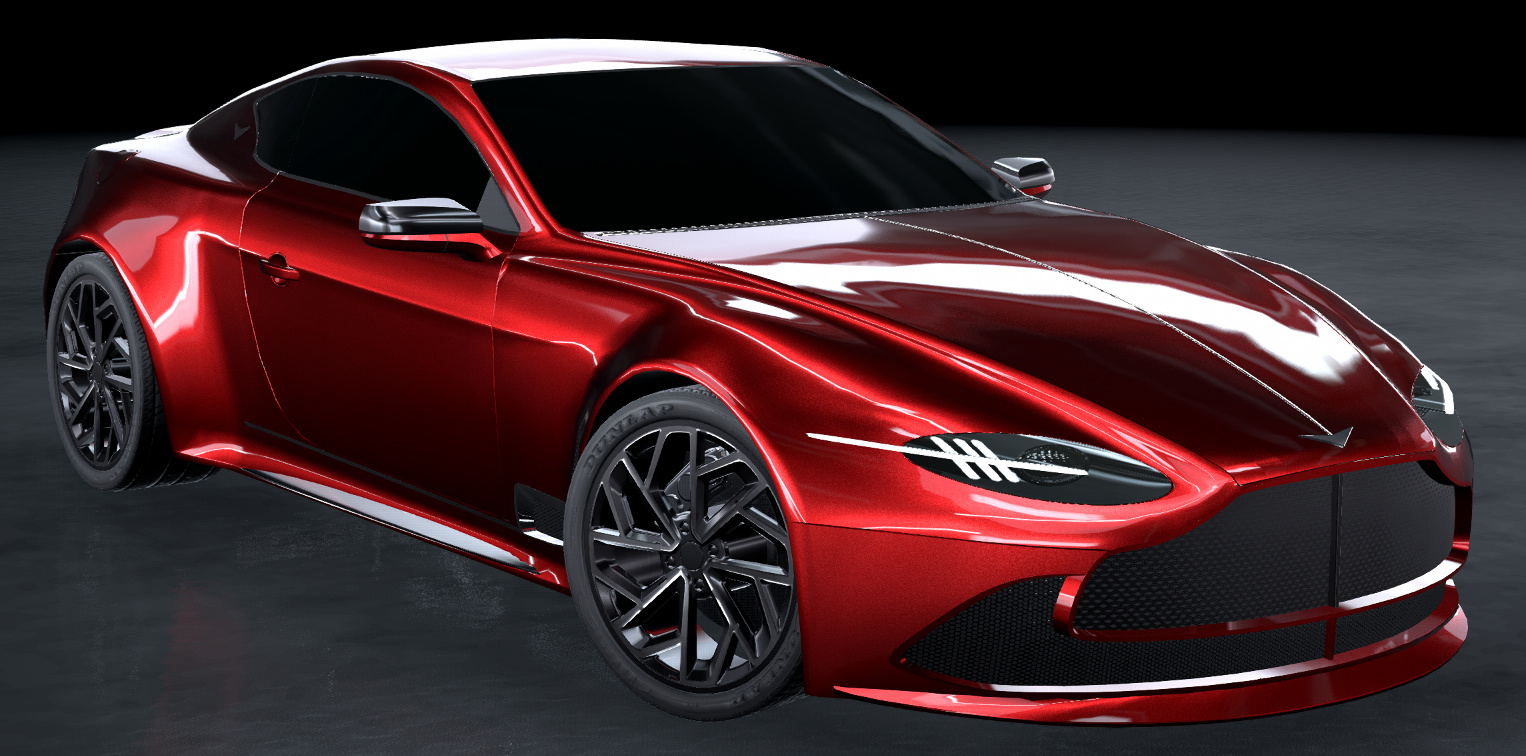








Specs:
- DOHC-48 5.0L NAV12 (720bhp/710Nm at 7500rpm)
- Aluminium chassis on carbon monocoque
- 7 speed duall-clutch gearbox
- 0-100 (3s)
- 380km/h top speed
- 490.000$ base price
2021
2021 Crest Gran Coupe
The Crest Gran Coupe is the fastest and most luxurious coupe the brand has ever produced.
The model was introduced to sit between the now defunct Tuono and the Espada. You can see it as a sportier version of the Espada, and a more radical version of the Tuono.
Pictures





(Shown here in Ornate Blue with optional Orange accents and Color-Matched wheels)
Specs:
- DOHC-60 6.5L TTV12 (762bhp/912Nm at 8000rpm)
- Partial alu/carbon construction (carbon monocoque)
- F/R Double wishbone suspension
- 9 speed adv. automatic gearbox
- 0-100 (2.9s)
- 370km/h top speed
- 225.000$ base price
Comparative pictures:
Pictures


2021 Crest Tuono III
In 2021 will be launched the successor to the Tuono S, aptly named, uhm, the Tuono.
It will use the same engine as the 2015 Espada S (although put up to date regarding emissions and consumption).
Pictures


(Promotional pictures)




(Car customizer pictures, with Apalis Red paint, and Gregio Noire rims)


(Shown here in Ultra Orange with optional bi-paint 21" rims)
https://imgur.com/xGCbYxt
(Customer car in Ultra Orange, with optional 21" rims color-matched to the body paint (US-spec))
Specs:
- DOHC-48 7.0L TTV12 (770bhp/800Nm at 8000rpm)
- Aluminium/Carbon body on carbon monocoque (1440kg)
- 9 speed adv. automatic gearbox
- 0-100 (3s)
- 385km/h top speed
- 280.000$ base price
P.S: doing the quarter mile in 10.6 seconds in a luxurious 4 seater sounds nice doesn’t it)
If you want more though:
2021 Crest Tuono III S
Pictures



(Note the detail in the real diffuser ![]() )
)
(Shown here in Albio Grey, with optional 21" matte black rims and Oro Yellow calipers).
Specs:
- 6.4L DOHC-60 TTV10 (860bhp/1080Nm at 8000rpm)
- 9 speed adv. automatic gearbox
- 0-100 (2.7s)
- 310.000$ base price
Tuono Engine Bay

Comparative pictures between the 3 Tuono generations:
Pictures







